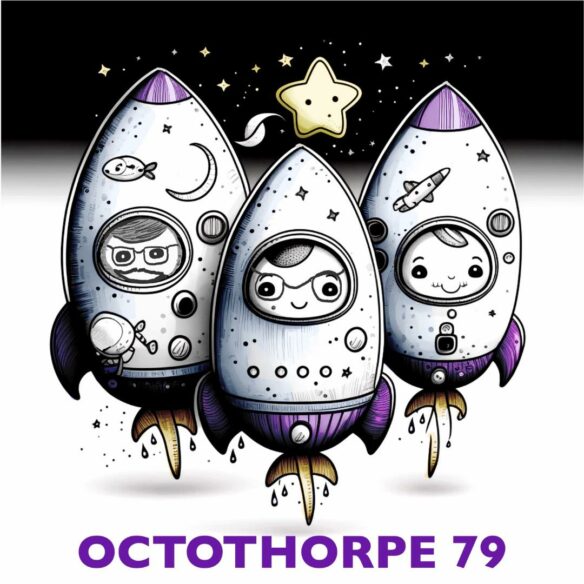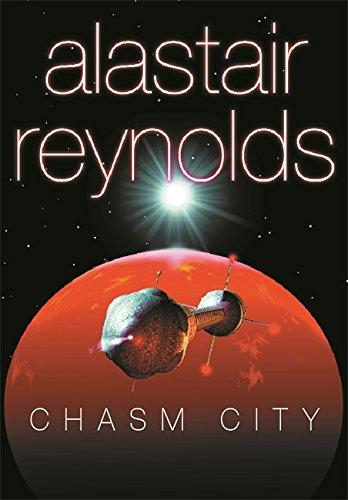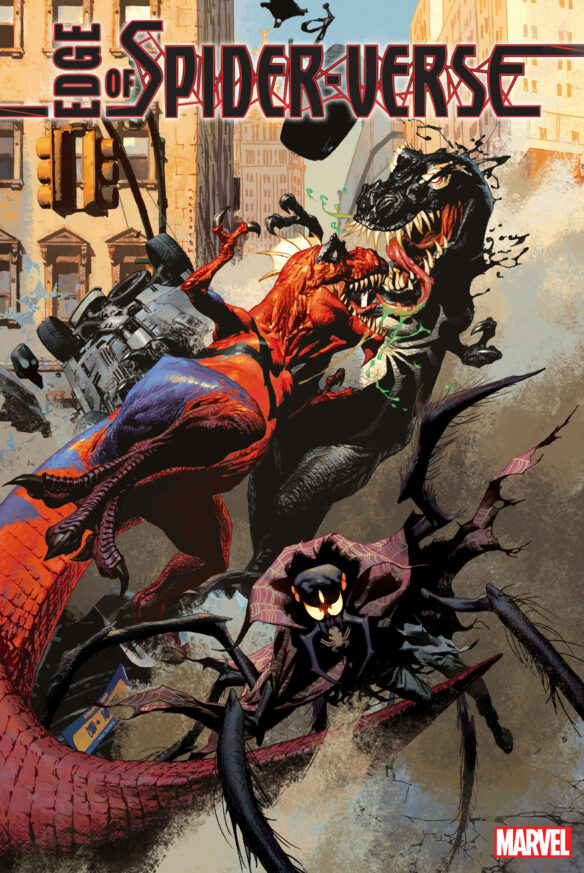(1) HELL(P) WANTED. Brian Keene is bringing back “Jobs In Hell”, the 2001 Bram Stoker Award for Non-Fiction-winning monthly industry newsletter for writers, artists, editors, and other professionals specializing in horror and other speculative and weird fiction genres. Paid subscriptions are being taken at the link.
Jobs In Hell will cost $5 per month to subscribe to. You can sign up for it here. The first issue will go out later this month.
To begin, it will run on a monthly schedule, rather than the weekly schedule of the old Jobs In Hell. I will revisit that schedule regularly, however, and I’m almost certain that at some point we’ll increase frequency.
If you are looking for submissions for your magazine, website, publishing company, etc. please email the details to [email protected]. Your email should contain the following information: Name of publication, name of editor overseeing submissions, guidelines as to what you are looking for, details on how to submit, deadline (if any), and payment (if any).
(2) ONLINE SFF COURSE IN NOVEMBER. Aliette de Bodard and Alastair Reynolds will be teaching an online course in writing SF & Fantasy at the end of the year: ”Teaching SF and F with Aliette” at Approaching Pavonis Mons by Balloon.
This course, “Sci-Fi & Fantasy”, offered through the Canolfan Ysgrifennu Tŷ Newydd Writing Centre, will be held over four online sessions on the following dates: Tuesday 14 November, Tuesday 21 November, Tuesday 28 November & Tuesday 12 December 2023 from 7.00 – 8.30 pm. Register here.
Over four online sessions, Aliette and Alastair will address the peculiar challenges and opportunities open to anyone wishing to write science fiction, fantasy or their related sub-genres. Drawing on their own experiences across a range of literary styles and formats, from short stories to novels and extended series, they’ll cover the mechanics of crafting a story, from planning and plotting, to the use of voice and viewpoint, setting and mood. They’ll address the unique challenges of worldbuilding within the literatures of the fantastic, from the use of language to evoke a time and a place to the invention of social systems and far-future technologies, and how to make those creations seem real to the reader. They’ll talk about the different stages of writing; from initial drafts to polishing, how to prepare work for submission and how to make the most of the literary marketplace, from traditional venues to the online world and self-publishing. They’ll bring invaluable experience in problem-solving: how to come up with ideas, how to work around creative blocks, how to make a good story better – and, always, how to find fun and fulfilment in your craft, wherever it takes you. The future is wide open!
(3) ZELAZNY AND MORE. Today at Galactic Journey Cora Buhlert reviews the 1968 Hugo winner Lord of Light by Roger Zelazny and the 1968 heist novel Easy Go by John Lange a.k.a. Michael Crichton amongst other reviews. According to Cora, the largely forgotten heist novel got a better review than the Hugo winner: “[March 16, 1968] In Distant Lands (March Galactoscope)”.
Buddha is a Spaceman: Lord of Light by Roger Zelazny
Roger Zelazny, of Polish origin himself, is one of the most exciting young authors in our genre and has already won two Nebulas and one Hugo Award, which is remarkable, considering he has only been writing professionally for not quite six years.
My own response to Zelazny’s works has been mixed. I enjoyed some of them very much (the Dilvish the Damned stories from Fantastic or last year’s novella “Damnation Alley” from Galaxy) and could not connect to others at all (the highly lauded “A Rose for Ecclesiastes”). So I opened Zelazny’s latest novel Lord of Light with trepidation, for what would I find within, the Zelazny who wrote the Dilvish the Damned stories or the one who wrote “A Rose for Ecclesiastes”?
The answer is “a little bit of both” and “neither”….
(4) OCTOTHORPE. In episode 79 of Octothorpe, “You Get To Be A Little Cat” —
John Coxon wants new gloves, Alison Scott is foreshadowing, and Liz Batty scrolls past spiders. We discuss a plethora of awards – Hugo Awards, Nebula Awards, BSFA Awards – while also chatting about hot dog finger gloves and Adrian “Spiders” Tchaikovsky. Listen here!

(5) ONE OF OUR CAPTAINS IS MISSING. [Item by Dann.] Chris Gore of Film Threat magazine recently pointed out that the new Paramount graphic being used to promote all of Star Trek has omitted one of the key characters in Star Trek history; the original and one-and-only James Tiberius Kirk (ignore that inconvenient headstone).
The TrekNews Twitter feed was one of the first to note the omission.
William Shatner noted that he didn’t find it surprising.
Various users responded with reimagined graphics that place a greater emphasis on Captain Kirk.
(6) MEMORY LANE.
2001 – [Compiled by Cat Eldridge.]
Our Beginning this Scroll isn’t the start of this series. That would be Revelation Space, published a year prior to Alastair Reynolds’ Chasm City, which came out on Gollancz twenty-two years ago.
Reynolds uniquely wrote Chasm City as a stand-alone novel so you needn’t be familiar with any of the five Revelation Space Universe that precede it, including the two (and soon to be three) most fascinating Prefect Dreyfus Emergencies. (There’s a seventh novel, Inhibitor Phase, which came out several years back.)
Chasm City appeals to me because to it is the rare SF novel set within a larger universe that, as I said, is intended to allow the reader who hasn’t encountered this series to be introduced to it.
It won the British Science Fiction Association Award.
It’s got great characters, an awesome setting and multiple stories that weave into each other most satisfactorily. It is certainly one of the best SF novels that I’ve ever read.
I’m sure I spotted one character here who shows up in the Prefect Dreyfus Emergencies series which I think was a very impressive piece of writing by him some years on.
And now its Beginning…
Dear Newcomer,
Welcome to the Epsilon Eridani system.
Despite all that has happened, we hope your stay here will be a pleasant one. For your information we have compiled this document to explain some of the key events in our recent history. It is intended that this information will ease your transition into a culture which may be markedly different from the one you were expecting to find when you embarked at your point of origin. It is important that you realise that others have come before you. Their experiences have helped us shape this document in a manner designed to minimise the shock of cultural adjustment. We have found that attempts to gloss over or understate the truth of what happened—of what continues to happen—are ultimately harmful; that the best approach—based on a statistical study of cases such as yours—is to present the facts in as open and honest manner as possible.
We are fully aware that your initial response is likely disbelief, quickly followed by anger and then a state of protracted denial.
It is important to grasp that these are normal reactions.
It is equally important to grasp—even at this early stage—that there will come a time when you will adjust to and accept the truth. It might be days from now; it might even be weeks or months, but in all but a minority of cases it will happen. You might even look back upon this time and wish that you could have willed yourself to make the transition to acceptance quicker than you did. You will know that it is only when that process is accomplished that anything resembling happiness becomes possible.
Let us therefore begin the process of adjustment.
Due to the fundamental lightspeed limit for communication within the sphere of colonised space, news from other solar systems is inevitably out of date; often by decades or more. Your perceptions of our system’s main world, Yellowstone, are almost certainly based on outdated information.
It is certainly the case that for more than two centuries—until, in fact, the very recent past—Yellowstone was in thrall to what most contemporary observers chose to term the Belle Epoque. It was an unprecedented social and technological golden age; our ideological template seen by all to be an almost perfect system of governance.
Numerous successful ventures were launched from Yellowstone, including daughter colonies in other solar systems, as well as ambitious scientific expeditions to the edge of human space. Visionary social experiments were conducted within Yellowstone and its Glitter Band, including the controversial but pioneering work of Calvin Sylveste and his disciples. Great artists, philosophers and scientists flourished in Yellowstone’s atmosphere of hothouse innovation. Techniques of neural augmentation were pursued fearlessly. Other human cultures chose to treat the Conjoiners with suspicion, but we Demarchists—unafraid of the positive aspects of mind enhancement methods—established lines of rapport with the Conjoiners which enabled us to exploit their technologies to the full. Their starship drives allowed us to settle many more systems than cultures subscribing to inferior social models.
In truth, it was a glorious time. It was also the likely state of affairs which you were expecting upon your arrival.
This is unfortunately not the case.
Seven years ago something happened to our system. The exact transmission vector remains unclear even now, but it is almost certain that the plague arrived aboard a ship, perhaps in dormant form and unknown to the crew who carried it. It might even have arrived years earlier. It seems unlikely now that the truth will ever be known; too much has been destroyed or forgotten. Vast swathes of our digitally stored planetary history were erased or corrupted by the plague. In many cases only human memory remains intact… and human memory is not without its fallibilities.
The Melding Plague attacked our society at the core.

(7) TODAY’S BIRTHDAYS.
[Compiled by Cat Eldridge.]
- Born March 16, 1883 — Sonia Greene. Pulp writer and amateur press publisher who underwrote several fanzines in the early twentieth century. She was a president of the United Amateur Press Association. And she was married to H.P. Lovecraft, though often living apart, until eventually they agreed to divorce. (Died 1972.)
- Born March 16, 1900 — Cyril Hume. He was an amazingly prolific screenplay writer with twenty-nine credits from 1924 to 1966 including The Wife of the Centaur (a lost film which has but has but a few scraps left), Tarzan Escapes, Tarzan the Ape Man, The Invisible Boy and Forbidden Planet. (Died 1966.)
- Born March 16, 1929 — Ehren M. Ehly. This was the alias of Egyptian-American author Moreen Le Fleming Ehly. Her first novel, Obelisk, was followed shortly by Totem. Her primary influence was H. Rider Haggard, telling an interviewer that Haggard’s novel She impressed her at an early age. If you like horror written in a decided pulp style, I think you’ll appreciate. (Died 2012.)
- Born March 16, 1929 — A. K. Ramanujan. I’m going to recommend his Folktales from India, Oral Tales from Twenty Indian Languages as essential reading if you’re interested in the rich tradition of the Indian subcontinent. Two of his stories show up in genre anthologies, “The Magician and His Disciple” in Jack Zipes’ The Sorcerer’s Apprentice: An Anthology of Magical Tales and “Sukhu and Dukhu“ in Heidi Stemple and Jane Yolen’s Mirror, Mirror. (Died 1993.)
- Born March 16, 1951 — P. C. Hodgell, 72. Her best known work is the God Stalker Chronicles series with Deathless Gods being the current novel. She dabbled in the Holmesian metaverse with “A Ballad of the White Plague”, first published in The Confidential Casebook of Sherlock Holmes as edited by Marvin Kaye. All of the God Stalker Chronicles series are available from the usual suspects
- Born March 16, 1952 — Alice Hoffman, 71 . Best known for Practical Magic which was made into a rather good film. I’d also recommend The Story Sisters, a Gateway story, The Ice Queen, an intense riff off of that myth, and Aquamarine, a fascinating retelling of the mermaid legend. The Rules of Magic was nominated for Mythopoeic Fantasy Award for Adult Literature Award.
- Born March 16, 1966 — David Liss, 57. Writer of Spider-Man: Hostile Takeover, novelization of Marvel’s Spider-Man whichis a 2018 action-adventure game. Comics writer, Black Panther: The Man Without Fear and Sherlock Holmes: Moriarty Lives series. Not at all genre but his trilogy of novels starting with A Conspiracy of Paper and featuring Benjamin Weaver, a retired bare-knuckle boxer, now a thief-taker, a cross between a PI and bounty hunter, are highly recommended by me.
(8) SPIDER-REX. Marvel brings us “The All-New Spider-Killer Curses the Spider-Verse in Josemaria Casanovas’ ‘Edge of Spider-Verse’ #1 Variant Cover”.
On May 3, the hit comic book series EDGE OF SPIDER-VERSE returns for another wild trip through the Spider-Verse, complete with revolutionary new Spider-heroes and further adventures for the series’ biggest breakout stars, all brought to you from an all-star lineup of talent!
…EDGE OF SPIDER-VERSE #1 will also feature the roaring return of SPIDER-REX and the daring debut of VENOMSAURUS in a story by writer Karla Pacheco and Pere Pérez.

(9) SCIENTIST FICTION. Several sff books are part of Martin MacInnes’ list of “Top 10 visionary books about scientists: searching for an answer” in the Guardian.
Science, as much as art, is an act of imagination, the pursuit of something new. While novels about scientists often play with this likeness, there are also scientists who write with the ambition and empathy of novelists. Scientists in literature appear in all sorts of guises: as megalomaniacs, heroes, obsessives. It is this last figure – the obsessive – the character who will not stop – that interests me most….
First on the list is Jeff VanderMeer’s Annihlation.
The four women who enter Area X are named only by their profession: biologist; anthropologist; psychologist; surveyor. It is the biologist who is closest to VanderMeer’s heart, clear in the gorgeous accounts of the living world they walk through and in the novel’s concern with ecstatic dissolution and eroded borders, an awful commonality linking all things. The novel is suffused in beauty and grief, as the biologist goes on, determined to find out what it all means.
(10) WATNEYCRETE. [Item by Mike Kennedy.]They tried urine. They tried blood. But it turned out that potato starch worked better.
The University of Manchester has come up with a extraterrestrial concrete mix that uses Mars (or Moon) dust, potato starch, and a pinch of salt (magnesium chloride). Plus, the “StarCrete” is said to have at least twice the compressive strength of standard concrete. “Engineers Built a New Kind of Concrete 2x Stronger Than the Real Thing” at Popular Mechanics.
The University of Manchester’s new “StarCrete” is twice as strong as traditional concrete, making it a potential solution as a building material for Mars. Add in some extraterrestrial dust and potato starch, and you have a potentially revolutionary new material.
In an article published in the journal Open Engineering, the research team showed that potato starch can act as a binder when mixed with simulated Mars dust to produce a concrete-like material reaching a compressive strength of 72 megapascals (MPa), over twice as strong as the 32 MPa seen in ordinary concrete. Of course, mix in moon dust instead and you can get StarCrete to 91 MPa.
This strength makes it a possible solution, according to the researchers, for a building solution on Mars as astronauts mix Martian soil with potato starch—and a pinch of salt, no joke—to give extra-terrestrial-suited concrete.
Earlier recipes from the team didn’t use potato starch, instead offering blood and urine as a binding agent to reach 40 MPa. Not every astronaut would be excited about continually draining their blood to build in space, though….
(11) DRESSED FOR SUCCESS. “Spacesuit for return to the Moon unveiled” at BBC News.
A new generation of spacesuit for humanity’s return trip to the Moon has been unveiled by Nasa.
The novel design comes with specialist features to support astronauts as they conduct scientific experiments on the lunar surface.
The prototype is said to be a better fit for female space travellers.
Nasa hopes to have the updated suit ready for the Artemis III mission to the Moon in 2025….
[Thanks to Andrew Porter, Michael Toman, Cat Eldridge, Steven French, SF Concatenation’s Jonathan Cowie, Cora Buhlert, Dann, John Coxon, Mike Kennedy, John King Tarpinian, and Chris Barkley for some of these stories. Title credit belongs to File 770 contributing editor of the day Cat Eldridge.]
